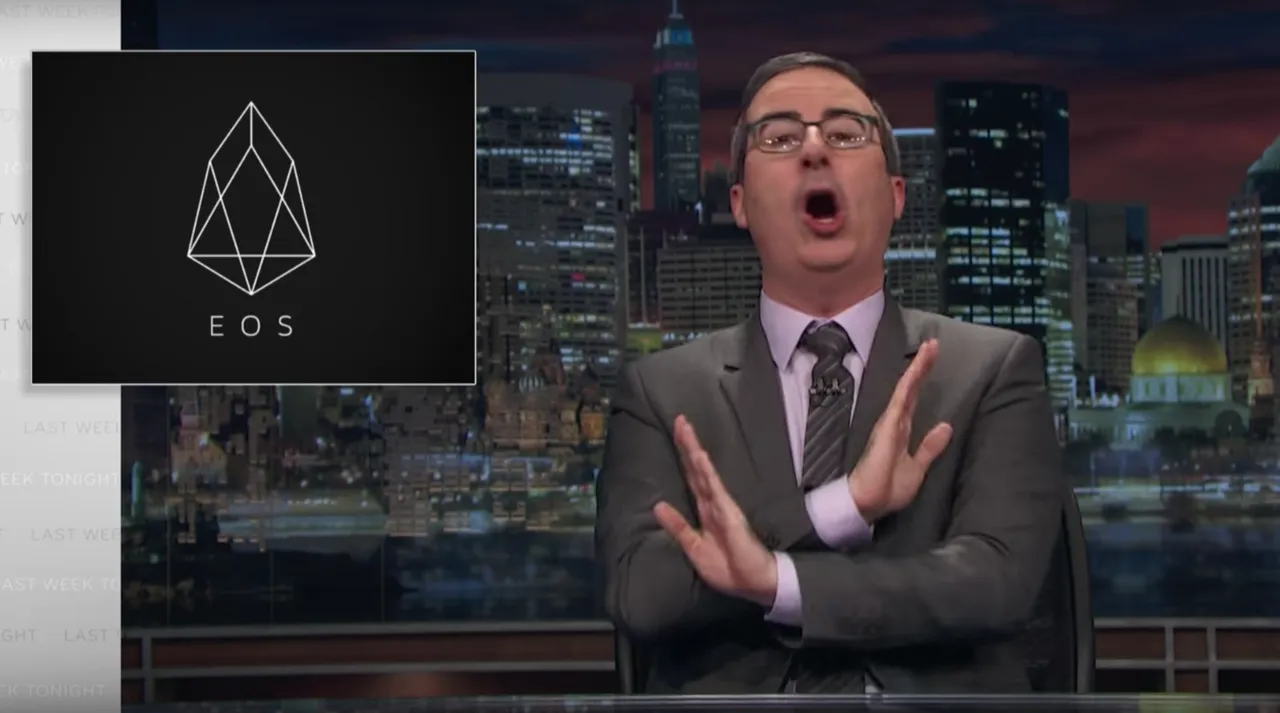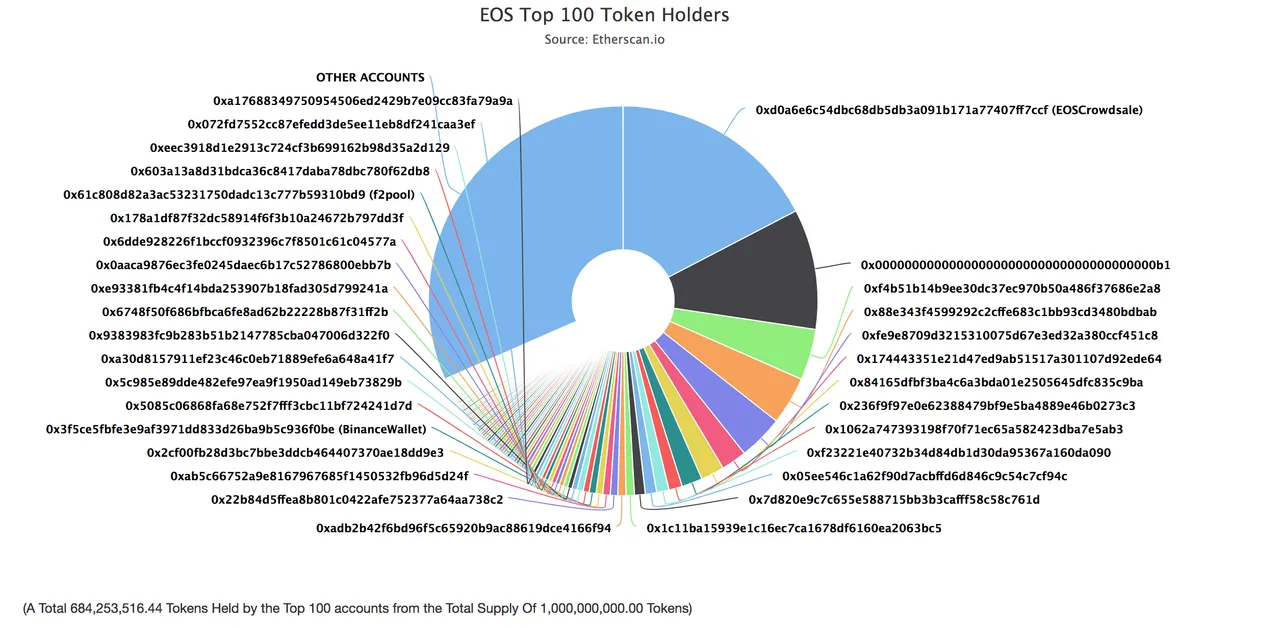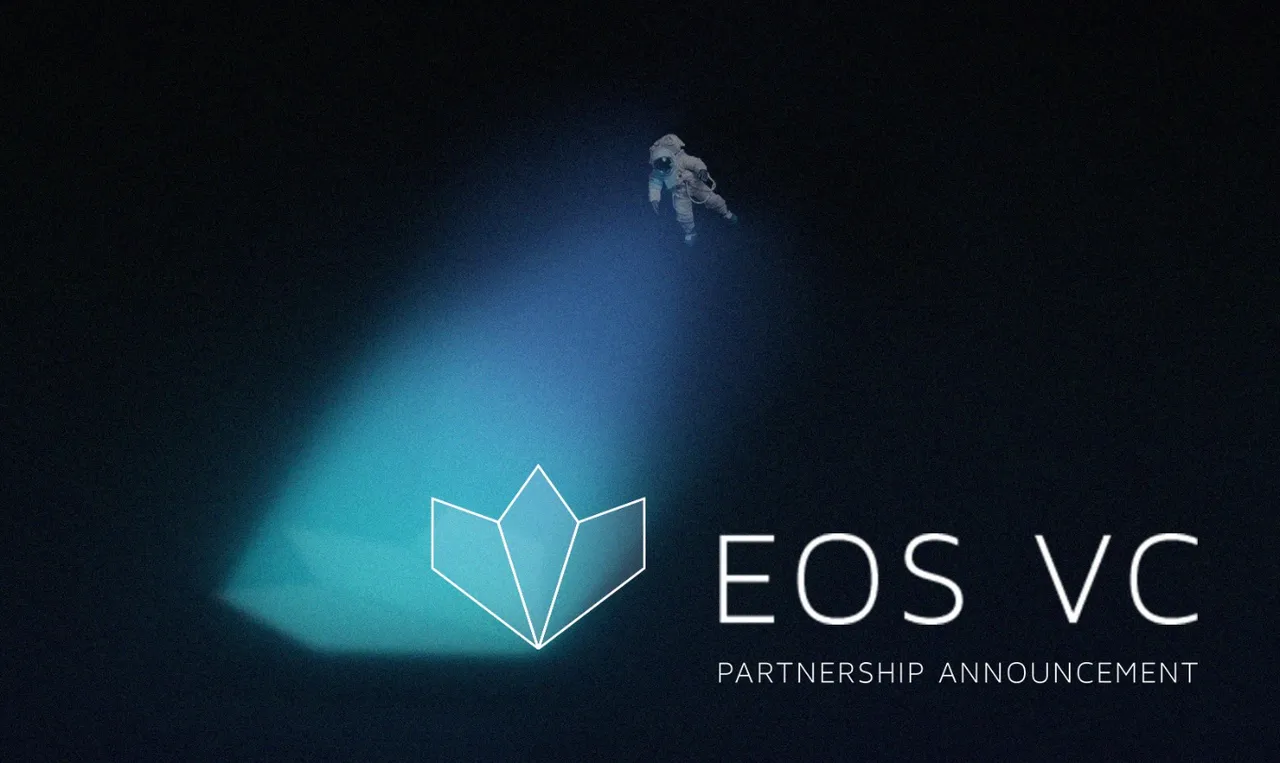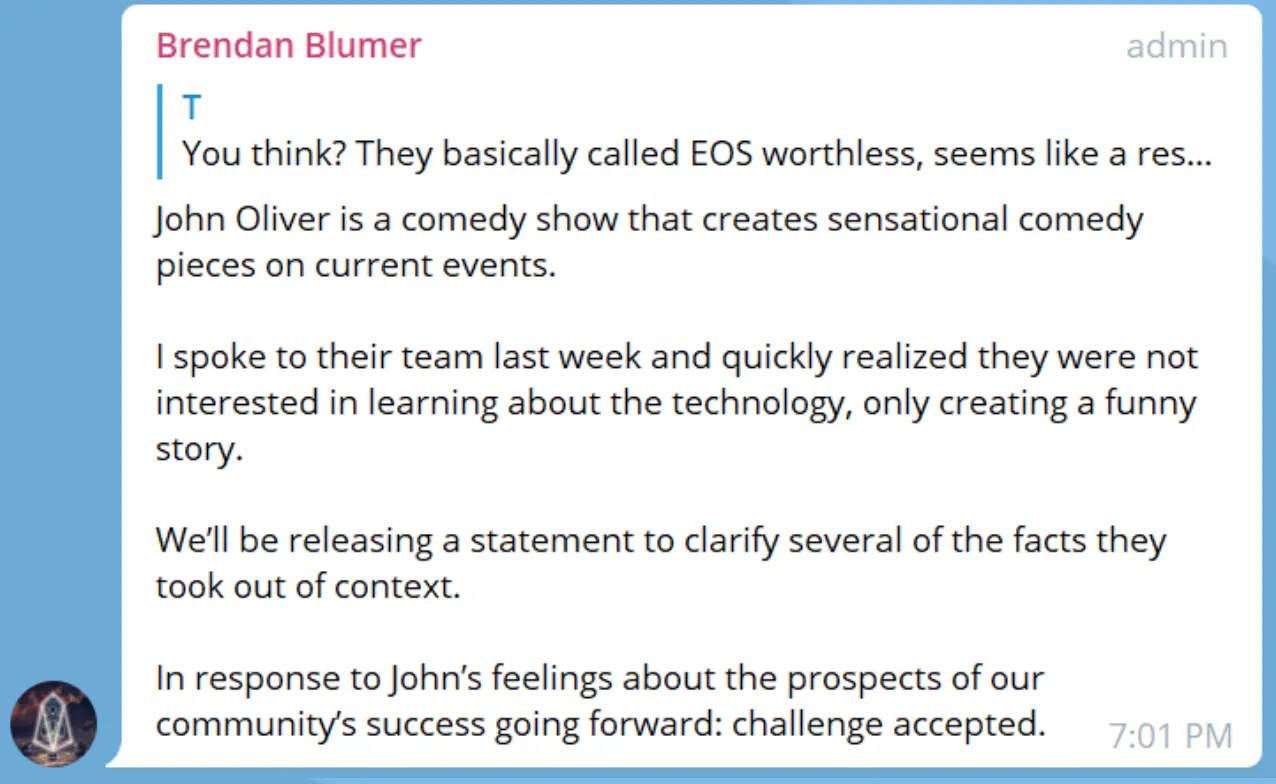
I'm sure most of you have seen the Last Bit Tonight with Block Chainiver episode about cryptocurrencies. John Oliver is a really funny guy and the whole piece was pretty hilarious. He made some really good points about people investing into crypto and urged them to be more cautious of scams. He had a plenty of laughs about the ponzi scheme Bitconnect. I mean how can you not laugh at that. In fact there is so much comedic gold that surrounds the crypto world it is hard not to be able to find things to poke fun at. I do however find it necessary to respond to what he said about EOS.
So Mr. Block Chainiver went off about the amount of money that has been raised by block.one though the sale of EOS tokens. He was citing a Wall Street Journal article titled "Chasing the Next Bitcoin, Investors Shell Out $700 Million for Coins With ‘No Purpose’". Since that article was first plublished EOS has still continued to bring in millions each day with the total raised for block.one now over 1 billion. The token distribution of EOS is something many people have taken issue with. They seem to fail to understand that the distribution model behind EOS is much better than something that John even touched on in his piece. The BAT ICO sold out in 30 seconds raising 35 million dollars and a handful of whales bought the majority.
Only around 130 people were able to buy the tokens today, with five buyers scooping up about half of the supply. The top 20 addresses in the token sale control more than two-thirds of all BAT, according to Joseph Lee, founder Magnr bitcoin exchange, who conducted a post-sale analysis.
https://www.coindesk.com/35-million-30-seconds-token-sale-internet-browser-brave-sells/
The problem with the Basic Attention Token was the limited number of people allowed to participate. Only 130 people were able to get any tokens during the distribution. If a crypto platform is to be truly successful than you want the tokens in as many hands as possible. Having a long distribution time period allows for this very problem to be solved. According to Etherscan there are already 290,480 addresses holding EOS tokens.
https://etherscan.io/token/EOS#balances

The EOScrowdsale address still contains a large amount of tokens but that is because this distribution is still on going. Once this crowd sale period is over EOS will be in the hands of many. Having the token in so many hands allows for a more vested interest in the project. As John pointed out, crypto is based on open source software. This means it is easy to copy and paste your way to new tokens and coins. The thing that is often forgotten is that you can not copy and paste communities. It is the users and developers that are the heart of a project. The network effect of EOS is very large and it is going to be the most well funded project of all time.
So block.one have raised a crazy about of money. They must be planning on spending all that on Lambos, right?

“Block.one is making a formal commitment to deploy over $1 billion through leading global venture capital firms to deploy capital back to entrepreneurs to create innovation in the EOS ecosystem,” said Brendan Blumer, CEO of Block.one. “This scale of investment for EOS VC is unprecedented for blockchain technology and the Block.one team is excited to be backing developers from around the world who are creating the next generation internet organizations.”
They are taking the 1 billion plus they have raised and are using it to fund further development on the EOS platform. Not only that but they are partnering up with some pretty well respected investors for this. One of those is Mike Novogratz, CEO of Galaxy Digital who had this to say:
“EOS.IO is designed to enable new community-driven business models capable of disrupting the world’s largest technology incumbents. This milestone represents Galaxy Digital and Block.one’s joint commitment to investing in that future.”
This partnership was the second announced for the EOS VC fund the first was Tomorrow Blockchain Opportunities, managed by Derek Rundell of Eric Schmidt’s TomorrowVentures. In case you are not aware of who he is Eric Schmidt was Google's CEO from 2001 to 2011. So while John Oliver is questioning whether EOS can go on to be the next Google the former CEO of Google is using his investment firm to help fund the development and potential of the EOS.IO software. So while we don't know if EOS will be the next Google we do know that the former CEO of Google sure does think it is worth helping to grow EOS and find out what can be developed from this new and exciting technology.
It appears that the show had contacted the CEO of block.one, Brendan Blumer and were not interested in the technology behind EOS.

It is great to see that they are preparing a response to clarify things that were said during the show. I think this will also just stand as more motivation for an already extremely organized and motivated community to prove to the world how powerful the EOS platform can be. It was a really funny piece the show put together but unfortunate to see EOS shown in the same light as Bitconnect. While there are plenty of other scams in the crypto space they could have chose to make fun of they decided to go after a project that will definitely launch and you can see on their GitHub just how far along the project is coming. https://github.com/eosio
So while it has raised 1.5 billion in 9 months without launching there is a test net up and plenty of projects already starting to be developed on EOS. So while it may have taken 7 years for FaceBook to reach this kind of money it certainly does not mean anything that EOS did it much faster, or does it?
Mark Zuckerberg had this to say about cryptocurrencies
“I’m interested to go deeper and study the positive and negative aspects of these technologies, and how best to use them in our services, .
So the CEO of FaceBook is acknowledging the power of crypto and contemplating how they might could possibly integrate them into their platform. Perhaps one reason for this is that he see the power of blockchain based social networks. Maybe he even is starting to feel threatened by them. A recent article by Bloomberg was talking exactly about that.
“I feel like I’m in the Stone Age when I’m on Facebook or Twitter,” Kadavy said. “They have no value without what you’re contributing to them. If Facebook doesn’t respond to this, things can change very quickly. They should be very concerned.”
So seeing as how EOS will have a social network built into it maybe people are already starting to place value on this and the many other exciting applications that EOS will bring when it has it's main net launch this summer.
So while I really enjoyed this episode and thought it was really funny it seemed to show EOS in such a negative way. I mean there was not even a mention of crypto kitties in the which you would think would be comedy gold especially when he was talking about Beanie Babies. A lot of it was just the same old FUD we have all heard so much about in reference to EOS. I'm almost surprised he didn't say "And just how does EOS think it can be an Ethereum killer when it is just a fucking ERC20 token, what a joke." So yeah it was really a funny episode but I look forward to John being on the wrong side of history when it comes to EOS.